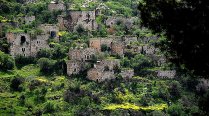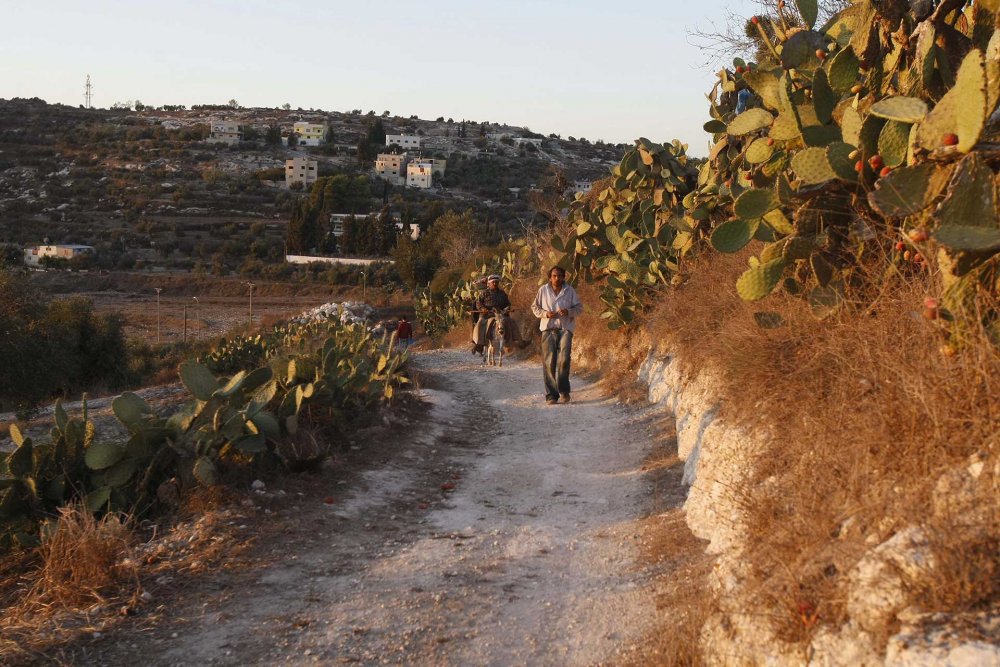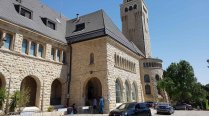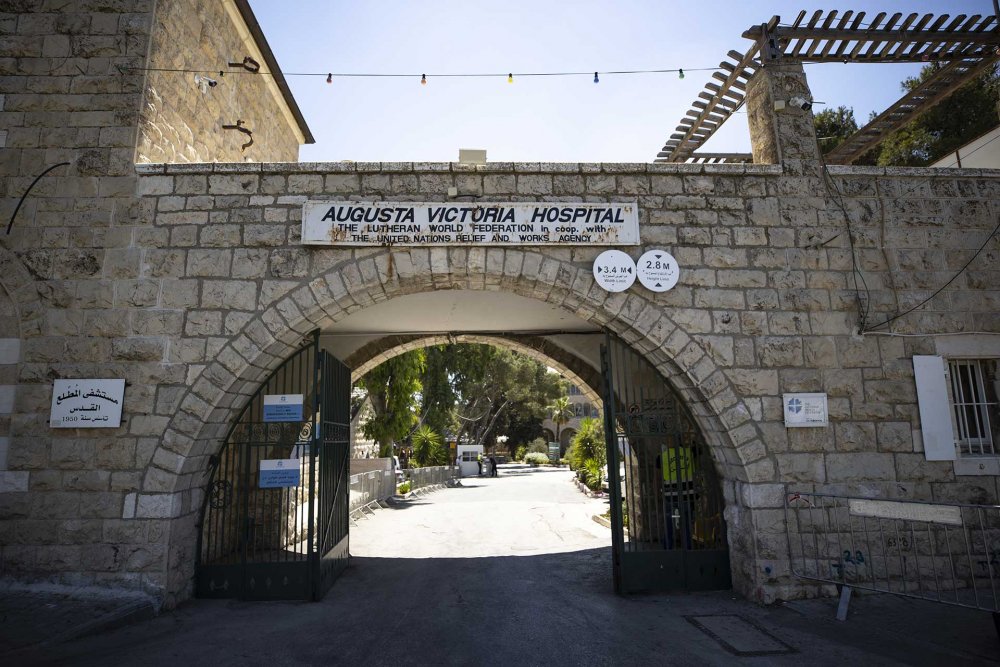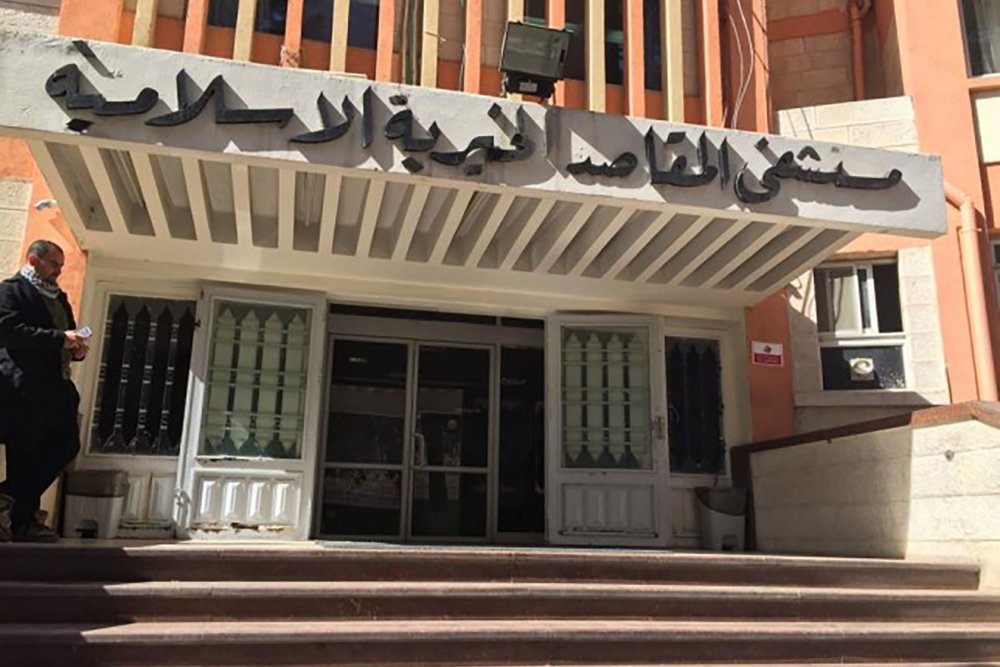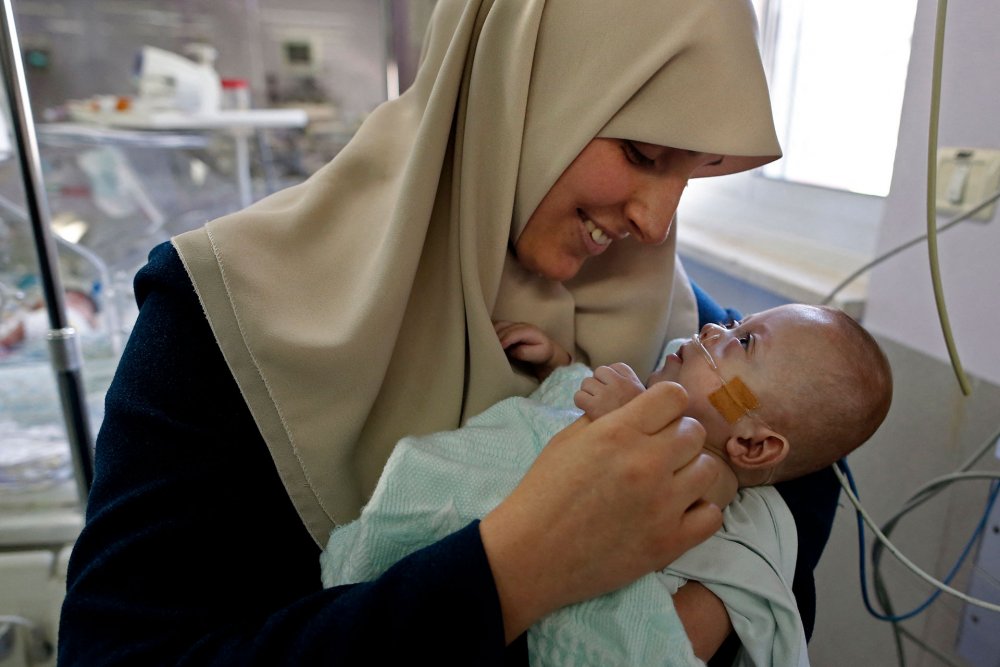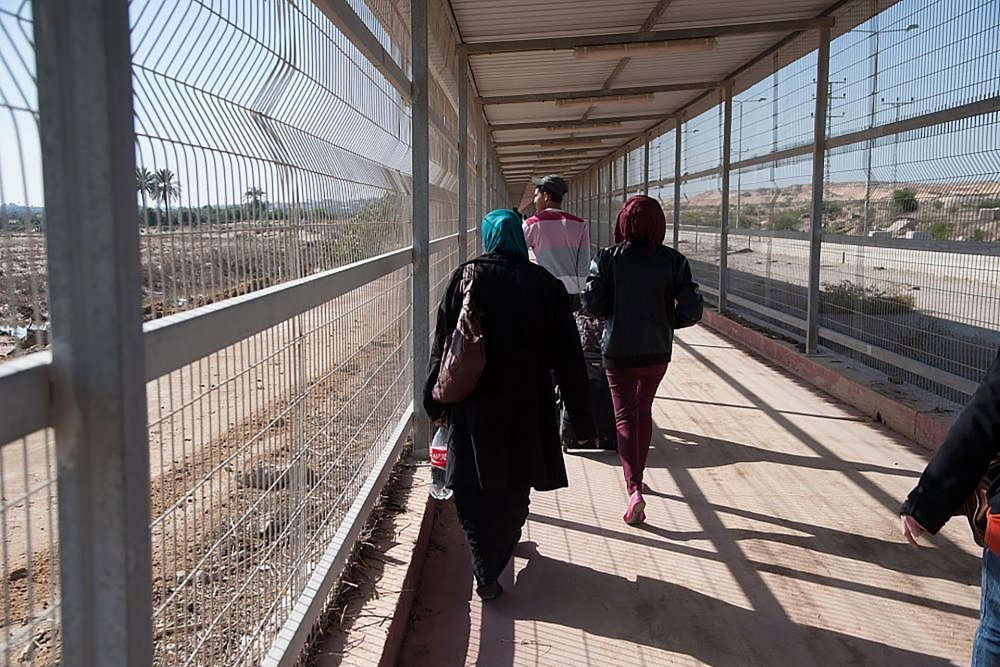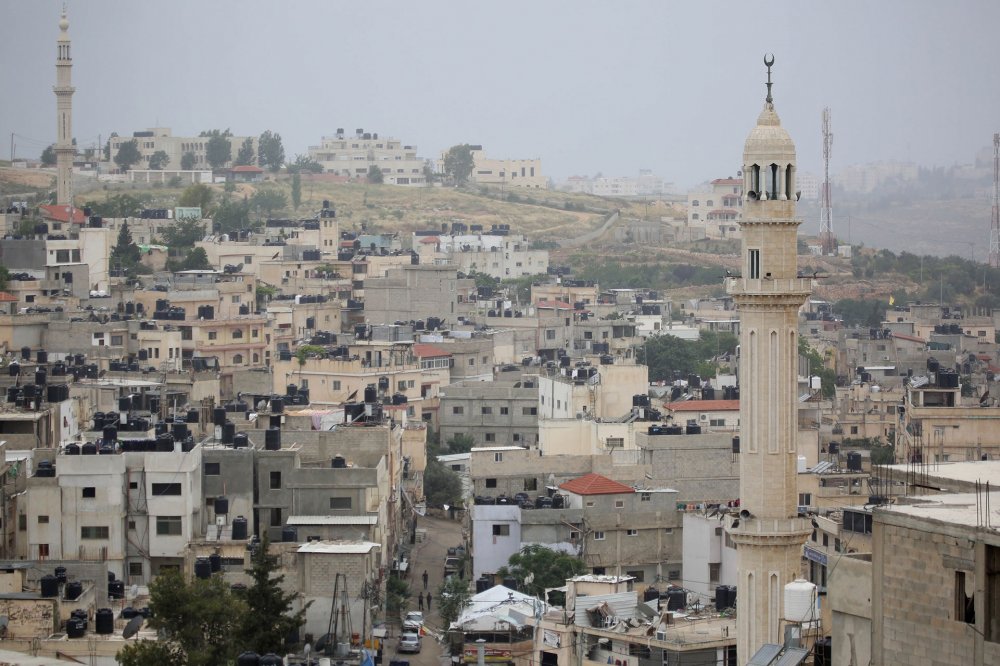Overview
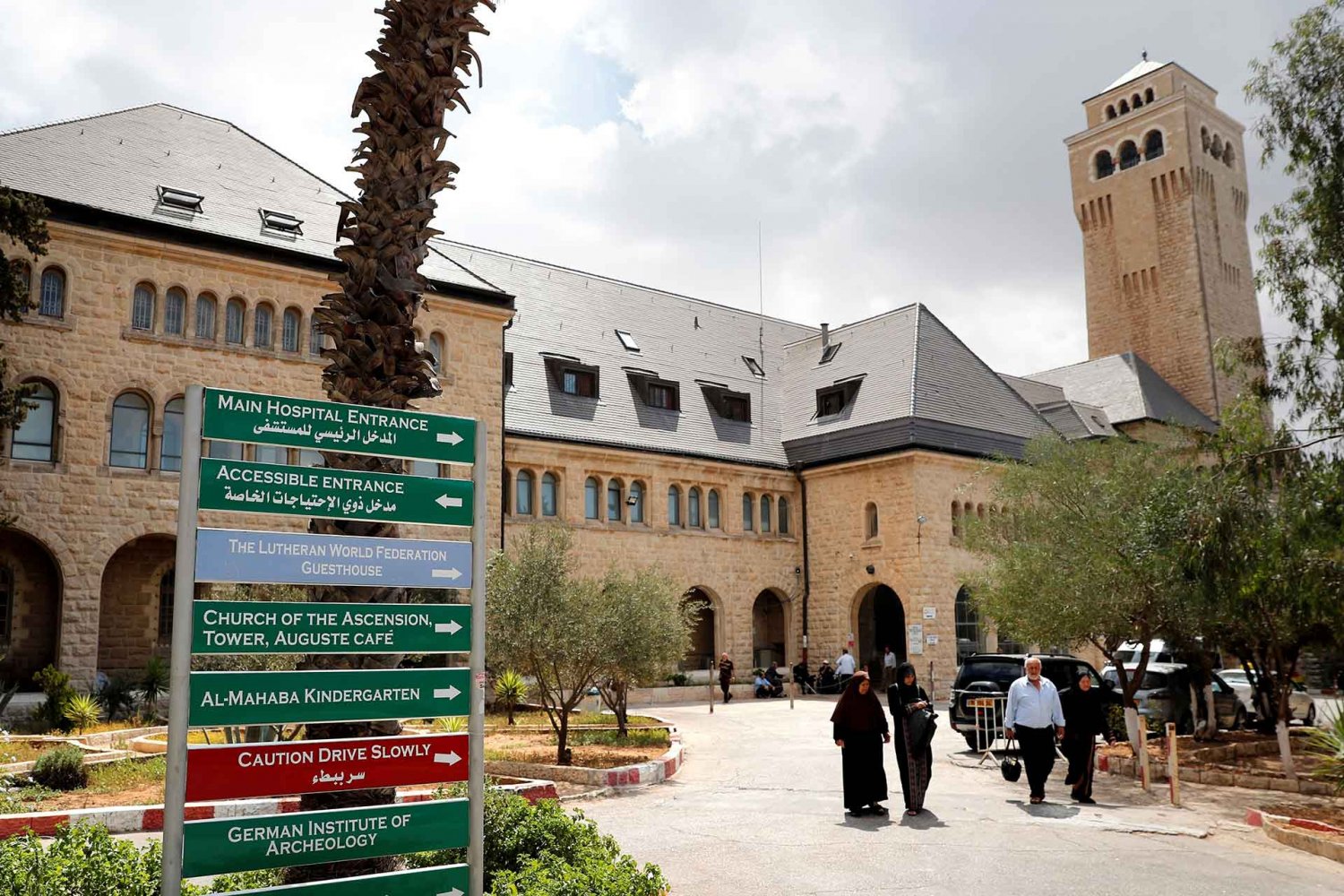
Credit:
AFP via Getty Images
Weeam Hammoudeh: Taking the Pulse of Palestine’s Public Health
Snapshot
A wide-ranging conversation with a Palestinian public health expert about some of the myriad ways, some studied and many not, in which living under Israeli colonial rule in a fragmented and deliberately stunted health care system takes a toll on Palestinians’ health, lives, and collective capacity.
Dr. Weeam Hammoudeh is a sociologist, public health expert, and assistant professor at Birzeit University’s Institute of Community and Public Health. She is also codirector of the Palestine Program for Health and Human Rights at the François-Xavier Bagnoud (FXB) Center for Health and Human Rights at Harvard University.
She is a member of various research and advocacy networks, including the Palestine-Global Mental Health network, the Reproductive Health Working Group (RHWG), the Palestinian Sociology and Anthropology Association, and Research for Health in Conflict (R4HC).
Dr. Hammoudeh holds a PhD and MA in sociology from Brown University and an MPH in community and public health from Birzeit University. Her research focuses on understanding how political and social transformations impact health, psychosocial well-being, health and social systems, and population processes, particularly in Palestine.
Jerusalem Story spoke to Dr. Hammoudeh over Zoom on October 21, 2024, to discuss the state of public health in Palestine, particularly with respect to cancer and cancer care, and the role of East Jerusalem within it.
Jerusalem Story (JS): Please tell us a little about yourself. Where are you from originally?
Weeam Hammoudeh (WH): I was born in Makassed Hospital in East Jerusalem, but we lived in Ramallah until I was eight. My family is originally from Lifta, so we are refugees from 1948. From Lifta, my father’s side of the family initially went to Bethlehem and then Ramallah. They’ve been there since 1964, and that’s where I grew up.
When I was born, there was no Separation Wall yet, so the hospitals [in East Jerusalem] were accessible. My parents used to work in Jerusalem—my mother at Dar Al-Tifel Al-Arabi and my father at Orient House—and they used to be able to drive to work and back daily. So that’s where I and two of my sisters were born.
We moved to the US when I was eight, because my dad started graduate school there, and we moved back to Palestine when I was 19.
I did my master’s in public health at Birzeit University and then left in 2010 to start my PhD in sociology at Brown University. During that time, I would spend about four months a year in Palestine. When I graduated in 2016, I came back to Palestine and worked at Birzeit University.
JS: What’s your area of specialization?
WH: My doctorate is in sociology, but I trained as a social demographer. Most of my work has been on health or population health. I’ve primarily worked on trying to understand how broader structural political factors impact public health, including mental health, cancer, and adolescent health.
My team and I are currently doing participatory research with communities in the Jalazone refugee camp [north of Ramallah], focusing on chronic displacement. Before that, I co-led a project focused on the health of adolescent girls residing in refugee camps in the West Bank and in Jordan. I tried to look at health holistically to understand how contextual drivers impact people’s health and well-being, and then how they navigate those things in their day-to-day lives.
Recently I have been doing a smaller project with my colleague, Layth Hanbali, an oral history of political social movements around health that evolved into the Palestinian Medical Relief Society and the Union for Health Work Committees. So there we are trying to understand how at different points in history people have tried to create alternative systems for health care, especially given the gaps left under occupation.
JS: Why did you choose this path?
WH: I was always interested in health during my undergraduate years in the US. I thought I might want to be a doctor, but in the US, you take different courses as general education requirements before medical school. I’d always been drawn to history and politics, so I started taking general ed requirements, and I became really interested in anthropology and sociology and understanding health through that lens, rather than a biomedical lens. I started to have doubts about the clinical work.
So when I went back to Palestine, I applied for a master’s in public health to explore that track. That really shifted a lot of things for me. In the first semester, I took one course with Rita Giacaman, and toward the end, she offered me a job as a research assistant. I accepted, and I became involved in fieldwork for different projects, which allowed me to rediscover Palestine through the lens of health. I got to know different areas of the West Bank intimately, because we had projects all over. This confirmed for me that this was the track I wanted to follow—to teach and contribute to health research in Palestine.
I continued that work for two years after my master’s, and I really enjoyed it, and then started my PhD.
JS: When you say you “became really interested in anthropology and sociology and understanding health through that lens, rather than a biomedical lens,” what do you mean?
WH: Sometimes you read about things and they’re more abstract, like health inequalities or lack of access, but I remember going for fieldwork to a village near Nablus that was under constant threat of forced expulsion and land confiscation. Interacting with them helped me understand their lack of access to health care better—it’s not only because infrastructure does not exist; it’s that they are not allowed to build. And even just by going through checkpoints. In Ramallah—if I only stayed in Ramallah—you can find yourself living in an insulated bubble even within that. Also I was interacting with people that I would not have otherwise interacted with on a day-to-day basis, and I learned how different people live and the different forms of violence they’re exposed to. You have the occupation on a larger level, but the way that it manifests in different places varies a lot. And then you see how these things intersect with class, with resources, with politics. So I discovered how Israeli occupation impacts people’s lives, but also the inequalities within Palestinian society, the issues around governance or lack of governance—all of these things you see come together, in a way that I couldn’t have understood in a classroom.
JS: How crucial is East Jerusalem for health care in Palestine, especially for cancer care?
WH: It’s very critical, historically and symbolically. Historically, it’s where a lot of the referral hospitals, the big specialized hospitals, are located, even to this day. So there’s Augusta Victoria for cancer care, and Princess Basma with specialized care for people with disabilities, and St. John’s eye hospital.
Also, if you look at the history of Makassed Hospital, there is this embodiment of resistance in trying to create facts on the ground. I don’t know if you know this story, but when the 1967 occupation of Jerusalem began, Makassed Hospital wasn’t fully built, and the Israelis were starting to take over buildings to use as military bases. They were going to do that with Makassed. And people all came together within Jerusalem, taking mattresses from their houses and other things to basically furnish the hospital and start providing care there before the Israelis got there to establish facts on the ground, because once it was actually functioning as a hospital, it would be harder for the Israelis to take it over. This is an example of grassroots mobilization. So there’s this legacy of health care provision that’s in service of community. And I think it is important in that respect. It’s been critical historically because it’s been where a lot of these referral hospitals have been.
Since 2000, because of the Separation Wall and all the restrictions on movement, over time, East Jerusalem has become less central than it used to be in terms of the specialized care. It would be difficult now for someone living in Ramallah to give birth in Jerusalem, whereas when I was born, that was the norm. So over time, there has been a building of alternative centers and hospitals elsewhere that are providing that care that used to be provided exclusively in Jerusalem. There are more centers and hospitals in Ramallah and Nablus and other places that are trying to cover some of that, because access has become more and more precarious, especially since 2000. For pragmatic reasons and with a growing population, you need more services. The downside of that is that Jerusalem becomes less central.
However, while chemotherapy can be provided in the West Bank but radiotherapy can’t, because of the “dual-use” designation, so when it comes to cancer care, everyone who needs radiotherapy must go to Jerusalem. So while Jerusalem has not lost its place completely, it has unfortunately become less central over time. Also the East Jerusalem Hospital Network (EJHN) in recent years has faced financial difficulties because of the debts owed by the Palestinian Authority (PA) and the restrictions that are being imposed by the Israeli Ministry of Health.
JS: What is the “dual-use” designation?
WH: As part of the different agreements related to the Oslo Accords, anything that enters the West Bank or the Gaza Strip needs to be approved by Israel. There is a list of items that Israel considers “dual-use,” which means they have the potential be used in ways that could threaten Israel’s security. But it’s a very broad and vague definition, and the restrictions are a lot more severe in Gaza. This includes, for example, radiotherapy equipment. The argument is that these radioactive materials could be taken out of these machines and then potentially be used in ways that threaten Israel’s security. With cancer treatment, this means that radiotherapy is not possible in the West Bank, even if the Palestinian Ministry of Health wanted to invest in this material.
And other things too—like in the pharmaceutical industry. There are raw materials required for pharmaceuticals that are also classified in this way. So this material is prevented from entering the Palestinian market. And the ceiling for development is already pretty low. This is one of the main challenges for building a self-sustaining, independent pharmaceutical industry in Palestine that could provide medication at a more affordable cost and generate jobs to feed into the economy. Regarding health, these also restrict medical care. So if you need a procedure that requires equipment that is classified in this way, your only options are to go through the whole referral and permit process or to travel abroad to get this treatment. So for cancer patients, that’s the choice—it’s either East Jerusalem or Israeli hospitals or travel abroad—to Amman or Egypt, or wherever else.
When you’re already going through treatment for cancer, it’s exhausting enough on your body. But you’re then having to navigate this. Oftentimes the authorities approve a permit for the patient but not for a companion, so the patient has to go through the checkpoints, the roads, and all of these things alone, and that creates an additional toll that patients have to endure. That’s if they even get a permit.
Other patients don’t get permits. And because of the restrictions, there were also pretty consistent shortages in chemotherapy as well. So the need for referrals was greater, but the approval of referrals was much lower. And oftentimes people are going without companions. You even had cases of very young children whose parents aren’t allowed to go with them, and they have to go with an older relative. There was a case a few years ago in Makassed where a baby ended up dying in the NICU alone, because the parents were not allowed to be there. So it’s a cruel system. But it’s designed that way—where the Palestinian economy and Palestinian health system is codependent and captive to the Israeli system.
JS: When you mention disparities between classes—does that mean that people can travel to Egypt or Jordan, if they have the money?
WH: Yes, or if you have the social capital—if you know people who can help make the referral process faster, that helps, or if you have the money to pay for the treatment rather than waiting for its financial cost to be approved. Sometimes, especially with cancer, at the more advanced stages, time is of the essence. So sometimes people will just pay for it. People might even be willing to borrow money from family members or others to make sure the patient who needs the medical care is able to receive it. So it adds a big toll.
It also adds a big toll to the health system itself, which is already underfunded and struggling. If you look at how money is being spent, about 37 percent of the [Palestinian] Ministry of Health (MOH) budget ends up going to referrals—not all to Israeli hospitals, some to hospitals in East Jerusalem, and now recently a growing proportion is for private hospitals within the West Bank. But if you are talking about close to 40 percent of a budget going for referrals so you can buy services outside of a health system, it leaves less for further development of the health system itself. And then if there are patients who need services that are only provided at Israeli hospitals, often the fees that are charged in those hospitals are much higher.
The PA has very little negotiating power here, because what they [the Israeli authorities] do is just deduct it automatically from the VAT taxes that they withhold. There is very little room for negotiation. And then the fees are also much higher. So in recent years, there has been a shift to try to have those referrals be either to Palestinian hospitals in East Jerusalem or private Palestinian hospitals or sometimes to Jordan or Turkey if the care there is cheaper. But still, it comes out of the cost of the development potential of the Palestinian health system, when you are expending so much of the limited resources you have just to buy our services rather than creating a more sustainable situation where you can provide some of those services yourselves.
JS: Presumably, since October 7, those permits are much harder to get. In the long term, we know there is a link between stress and cancer. As the situation gets so much more stressful and intense in the West Bank, will people be more in need of care but their access will be more limited?
WH: Yes. The access has become a lot more limited, although I have not seen recent data. For a while they [the Israeli authorities] have stopped them [medical entry permits] completely. Now I think it is a lot more restricted, especially in terms of companions and in general, a lower percentage of medical entry permit requests are being approved.
This is a really important point and it comes up a lot in our work. When we have worked on well-being or quality of life, that is very much part of people’s understanding of their health and what affects their health—from adolescents to older people. Even colloquially, people refer to certain causes of disease as being from grief or things like that. So they do recognize how much stress there is and what impact that has in the long term.
The other thing that does not get as much attention—we did a small project on women’s experiences with breast cancer. Part of the interview was to understand how they came to be diagnosed, and what their understanding of their disease was. And you saw that especially women, coming from rural areas in the north especially, would talk about how they are exposed to all these toxins—coming from areas near Tulkarm that are close to the Dimona nuclear plant or near settlements that had toxic dumping grounds.
They’d talk about how cancer used to be this rare thing, and how so many people from their village or family now get different kinds of cancer. There hasn’t been much systematic research on this, and it’s difficult to prove this causal link, but some Israeli researchers have done some work in the Hebron area looking at disposal of electric waste and blood cancer in children in areas like Hebron. And they found a higher than expected rate of blood cancer in children living in these areas. I think this is just the tip of the iceberg. So in addition to chronic stress that people really link to hypertension and diabetes, there are also environmental conditions created by the occupation that probably have some link to certain diseases that are more sensitive to this, like cancers. And this has been established in other places like the US. We couldn’t really test that hypothesis, but given what we know from other places, it is not unlikely that this is driving some of the other cancer incidence.
In Gaza, this is going to be—I mean aside from the magnitude and scale of bombing and killing of people, but if you think of a place as small as Gaza where I think that latest figures are that four times as many bombs have been dropped there as on Nagasaki and Hiroshima, that is bound to have long-term effects. There were also reports of asbestos being in those bombs. Things we know are clearly linked to cancer and other diseases. These are not things you can easily get rid of. So even after the genocide stops, you will have huge ramifications in terms of the environment in Gaza. We see some of these things on a smaller scale being used in Tulkarm and Jenin—destruction of infrastructure and of the environment. That is bound to have an impact on people’s health.
JS: How does all of this huge stress and trauma impact social support for women who are coping with breast cancer?
WH: In the West Bank, for example, it’s been one of the deadliest years just in terms of the number of people getting killed, but also movement within the West Bank has become more restricted. So if people need to cross checkpoints to get their support systems, that might reduce their access. And their access to care is also going to be affected.
And just the stress of it all—you see it just in people’s mood. Even if nothing is happening where you are living—we’ve been watching this genocide unfold for over a year, and we see Israel getting away with committing a genocide and really depraved brutality over and over and over again. I don’t think we fully comprehend how it’s affecting all of us, and I think especially for people who are undergoing treatment and dealing with disease and other things, it is an additional layer of stress. At the very minimum, we know that psychological well-being affects someone’s prognosis. These conditions are creating additional stress and restricting access to support systems and care.
People’s resources might be more limited because the financial situation has really deteriorated since October 2023. Public sector salaries haven’t been paid in full for the whole year, maybe only at some points at half levels. That affects people on multiple levels, even before thinking about the stress of the genocide itself. More stress and more uncertainty than people have been used to. It’s not like the uncertainty is new; it has been a feature of life. But it has become harder to “normalize the abnormal,” because it crossed the threshold you are used to dealing with.
The other thing is that services are more limited than they used to be. Just because of the financial challenges.
For example, primary health care clinics run by the Ministry of Health have been operating only two or three days a week instead of five, because they don’t have the money to pay people to work full time, so diagnosis and screening programs are delayed. If we are thinking about cancer in Palestine specifically, we already know that more than half of the cases are diagnosed at later stages, which really does affect survival rates. So this is likely to get worse under these conditions.
JS: Why are Palestinians diagnosed at later stages?
WH: Part of it is lack of access. Part of it is a fragmented health system, so communication across departments is not smooth. Screening programs are more limited. And then for a long time, there was also a taboo around cancer. People are afraid of cancer and so would delay seeking care and getting a diagnosis, or they weren’t sure whether they were even going to find the services they need. With something like breast cancer, which is one of the most treatable cancers especially if caught early, similarly for colon cancer, it’s a missed opportunity. I think some of those things have gotten better, but they are not where they should be.
JS: Late diagnosis means worse outcomes?
WH: It’s hard to say, because the data are not systematic since the registry is fragmented, but in some of the interviews we have done with oncologists at different hospitals, they’ve noted that patients come in later [at the diagnosis stage]. Also they tend to be diagnosed younger. It is not clear why. And it’s been shown in Palestine and other countries in the Middle East. There are different theories about possible genetic factors, but we don’t really know why they are younger at diagnosis on average. But at least the part about when they are getting diagnosed is something you can intervene on.
Another factor is stigma. We did a study in 2009–10 and then a different one three years ago of patients with advanced cancers—breast, colon, lung—and you can see, it was really hard for women to even say the word “cancer.” They would just say “the bad disease.” Now you see people talk about it more openly and call it what it is. So I think in terms of that stigma, there is probably less than there used to be.
But there is still a lot of fear. One of the women we interviewed recently has struggled to get treated for breast cancer for 10 years or so. And she talked about how she has a family history of cancer, and she felt a lump, and she knew it was there, but it took her two years before she went to get a diagnosis, even though one of her relatives who was a doctor told her she needed go. But her kids were really young then, so she couldn’t face not being able to care for them. Maybe it is a form of avoidance where you don’t want to face it. But part of it is also how much trust people have with the health system that is available to them, and whether they really think they will actually be able to get better or not.
JS: Does this also affect Palestinian Jerusalemites?
WH: I don’t have as much experience with Palestinians living in Jerusalem when it comes to cancer care. In theory, they do have health insurance. At least one woman we interviewed lost her insurance access and was getting care within the [Palestinian] hospital in Beit Jala. I think in general there is more access compared to PA ID holders, but there was some literature a few years ago that compared outcomes between Palestinians in Jerusalem and Jewish Israelis in Jerusalem in terms of cancer survival, and there are inequalities. And probably even among Palestinian citizens of Israel. Especially when these studies are conducted by Israelis, the explanations for why these inequalities exist tend to focus more on behavioral cultural arguments—either like “oh, Muslims are fatalistic, so they are less likely to seek care,” or “there is a cultural taboo”—and it blames the victim for what are in fact systemic issues. Palestinians might not trust the health system or the intentions; there is a lot of wariness of what the Israeli medical establishment could do to Palestinian bodies. There are cases where, for example, with prisoners, organs are removed, and also the skin bank that Israel has—the largest skin bank—some of that skin is from the bodies of Palestinians killed or Palestinian prisoners. So there’s some mistrust.
On the other hand, you also now have a growing proportion of Palestinian doctors working within the Israeli health system, so that might improve access, especially if they’re able to communicate more clearly. But I think in general they would have more access and access to specialized services.
Because Palestinian Jerusalemites have Israeli insurance, it would privilege Israeli hospitals, and I think that has also had a negative impact on the hospitals from the EJHN, where they are primarily treating Palestinians from the West Bank and Gaza rather than Jerusalem ID holders [i.e., permanent residents].
JS: What research are you working on now?
WH: I’ve been doing more work with Dr. Osama Tanous on geospatial analysis of the destruction of health facilities in Gaza during this genocide, as well as other things related to Gaza. We’re trying also to do a qualitative study of the experience of displacement and access to basic infrastructure of health, for Palestinians in centers in Gaza but also in Egypt.
One of the main projects I am involved in is a community health project. We are working primarily with Jalazone camp near Ramallah. We are trying to work in a more participatory way with the community actors. To understand the health situation but also to codevelop interventions that can address some of the main health concerns. They really don’t have an idea of what the main health needs are because of the insufficiency of data at the camp level.
We designed and implemented a survey last summer to try to understand baseline health and social conditions in the camp. We had workshops with different community actors to build on those findings. We’ve been working specifically on school-based interventions for adolescents, so we’re getting started in the new academic year in the UNRWA schools within the camps. We also have a team that does art therapy, counseling, and more substantive sessions related to different topics around health. The idea is that the students will develop their own interventions around areas that they think are priorities, either in the school or in the camp.
I’m also working on papers connected to previous projects like the social movements around health care.
And a few papers related to the adolescent girls project, looking at how contextual factors impact mental health.
JS: Is there anything you’d like to add?
WH: Just that I think it’s important to remember that health care provision is one small part of what determines people’s health. It’s largely impacted by broader social, political, and environmental factors, and I think within the Palestinian context, that needs to be central to our analysis and understanding.
And it’s important to recognize the heroic commitment to providing care through all the violence and destruction. We consistently see Palestinians trying to care for each other and provide care and provide alternatives. Even if they are lacking. But I think it is important to remember that Palestinians have enacted that kind of agency and insisted on trying to improve conditions rather than just accepting what is handed to them by Israel.
Especially the effort that is being put forth by those who are experiencing the worst kind of violence we’ve seen in modern history.
Publications
For those interested in Dr. Weeam Hammoudeh's work, a list of her publications can be found here.


